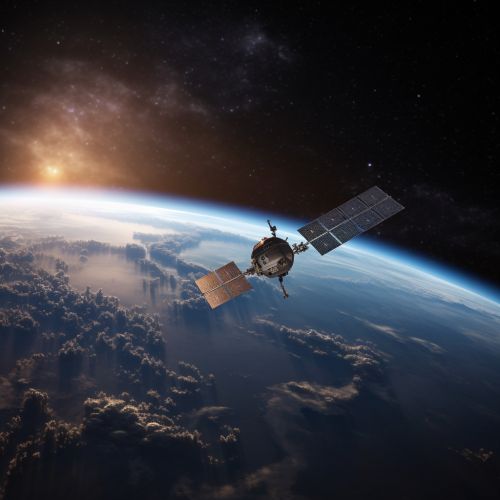Medium Earth Orbit
Overview
A Medium Earth Orbit, also known as an intermediate circular orbit (ICO), is a type of orbit around Earth that lies between a low Earth orbit (LEO) and a geostationary orbit (GEO). The altitude for MEO ranges from approximately 2,000 kilometers to just below the geostationary orbit at 35,786 kilometers. Satellites in MEO have an orbital period that ranges from about 2 to 24 hours.


Characteristics
MEO is characterized by an orbital period that is greater than two hours, yet less than one day. This distinguishes it from low Earth orbit and geostationary orbit. The orbital speeds of satellites in MEO are slower than those in LEO but faster than those in GEO. The orbital paths of MEO satellites can be circular, elliptical, or highly elliptical, depending on the mission requirements.
Applications
MEO is used for various applications, including navigation, communication, and science. The Global Positioning System, for instance, operates in this orbit. Other navigation systems, such as Russia's GLONASS, Europe's Galileo, and China's BeiDou, also utilize MEO. Communication satellites that require a larger coverage area than LEO can provide, but with lower latency than GEO, are often placed in MEO. Furthermore, scientific missions, such as those studying the Earth's magnetosphere or performing astronomical observations, may also use this orbit.
Advantages and Disadvantages
MEO offers several advantages over other types of orbits. For one, satellites in MEO cover a larger area of the Earth's surface at any given time compared to those in LEO, making them ideal for global navigation systems. Additionally, because they are closer to Earth than GEO satellites, they provide lower latency communication. However, MEO also has its disadvantages. Satellites in this orbit are subject to more complex orbital mechanics than those in LEO or GEO, requiring more sophisticated tracking and control systems. They are also exposed to higher levels of radiation from the Earth's Van Allen radiation belts.
Orbital Mechanics
The orbital mechanics of MEO are influenced by several factors, including the Earth's gravitational field, atmospheric drag, solar radiation pressure, and the gravitational pull of the Moon and other celestial bodies. These factors can cause the satellite's orbit to deviate from its intended path, necessitating periodic adjustments, or station-keeping maneuvers, to maintain the correct orbit.
As mentioned earlier, several global navigation satellite systems (GNSS) operate in MEO. These systems, which include GPS, GLONASS, Galileo, and BeiDou, provide accurate positioning, navigation, and timing services to users worldwide. The satellites in these systems are arranged in multiple orbital planes to ensure coverage of the entire Earth's surface.
Communication Systems in MEO
MEO is also used for communication systems. One example is the O3b (Other 3 billion) network, which aims to provide broadband Internet connectivity to the "other 3 billion" people in the world who lack reliable Internet access. The O3b satellites are placed in a circular MEO at an altitude of 8,062 kilometers, providing coverage between 45 degrees north and 45 degrees south latitude.
Scientific Missions in MEO
Several scientific missions have utilized MEO to study the Earth's magnetosphere, the region of space dominated by the Earth's magnetic field. These missions include the Cluster II quartet of satellites launched by the European Space Agency (ESA) and the THEMIS (Time History of Events and Macroscale Interactions during Substorms) mission launched by NASA.
Future of MEO
The future of MEO is likely to see continued use for navigation and communication systems, as well as scientific missions. There is also potential for increased use of MEO for broadband Internet services, particularly in regions where terrestrial infrastructure is lacking or insufficient.
